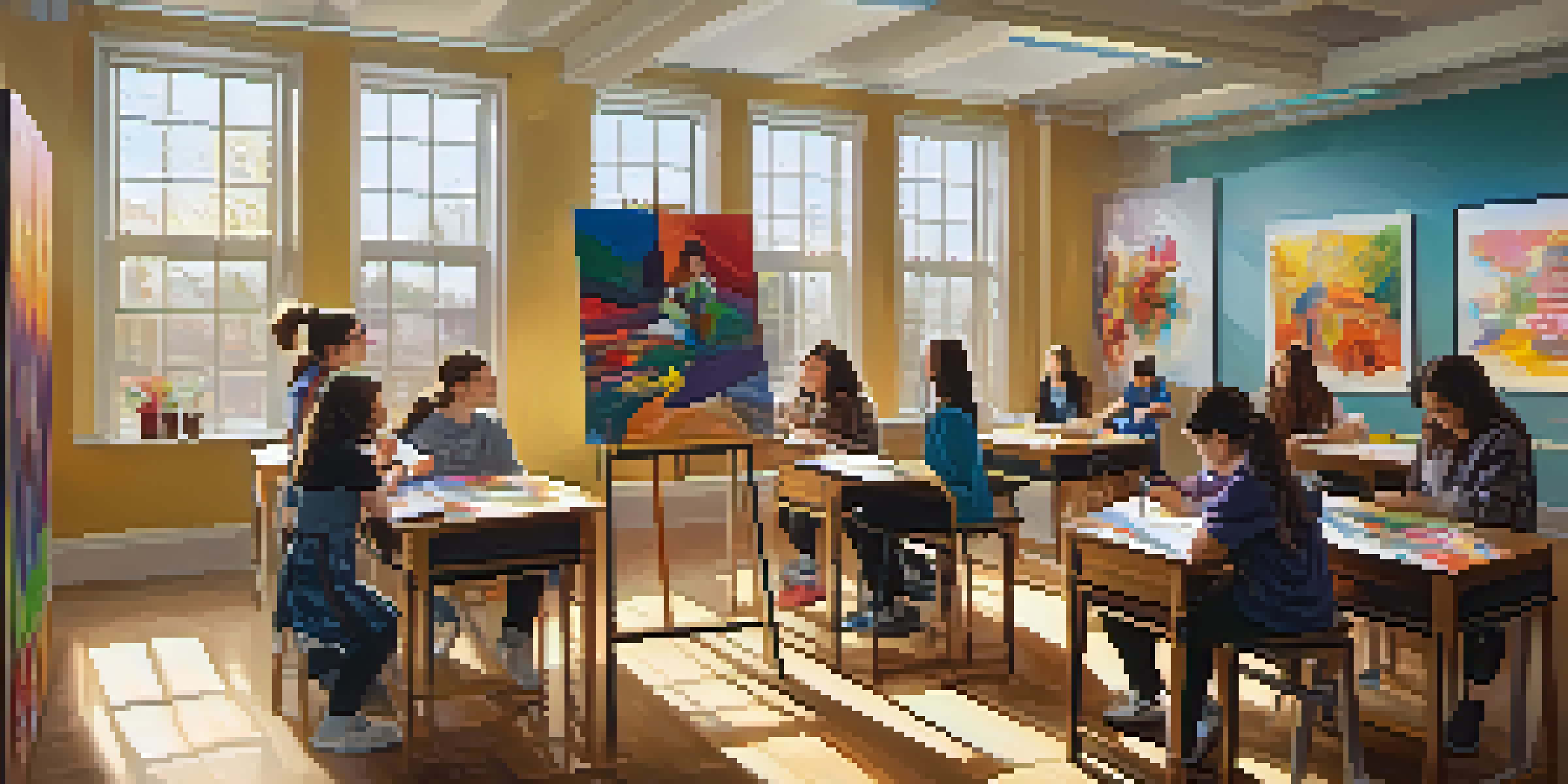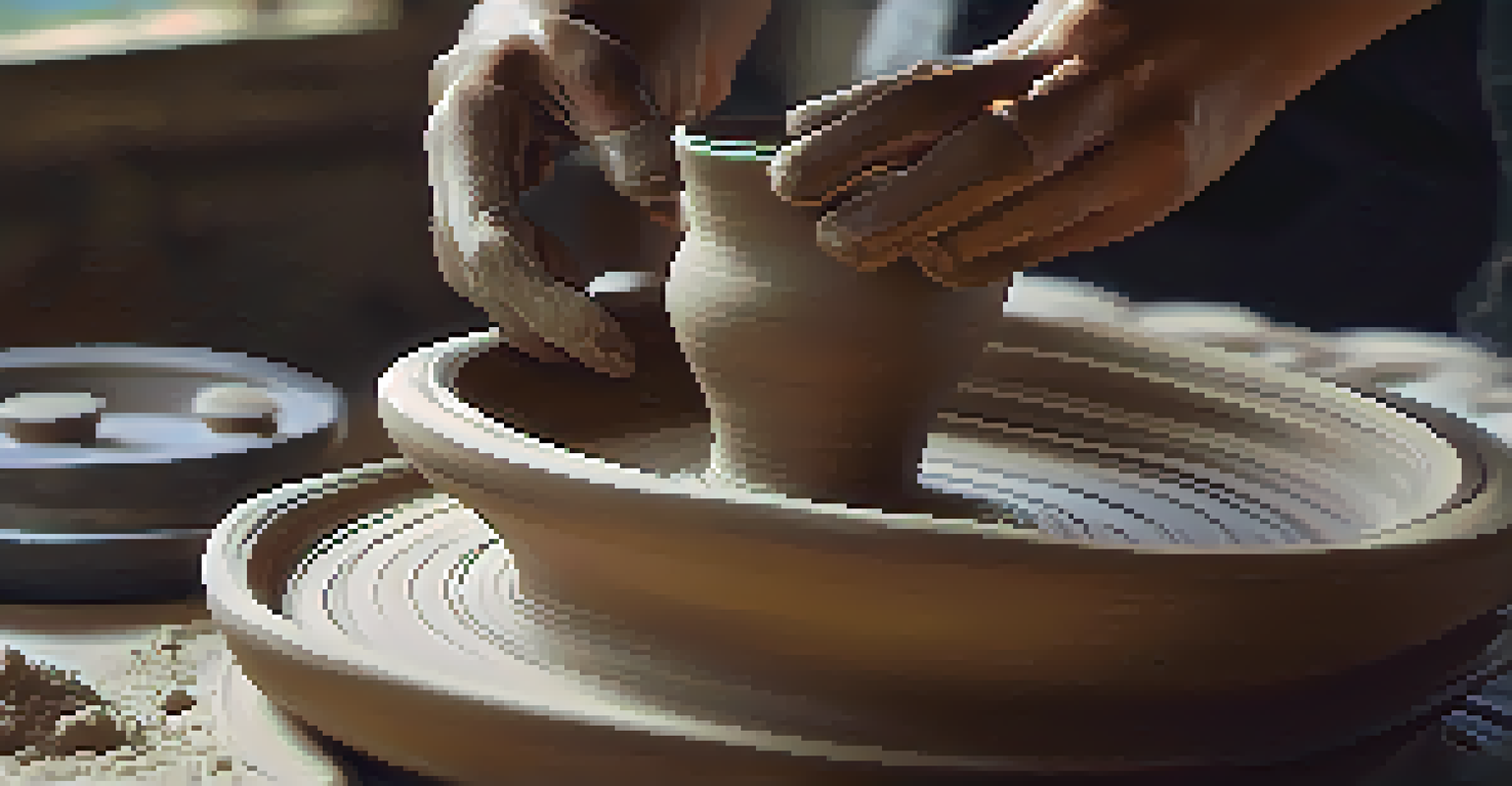Impact of Arts Education on Florida Students' Success Rates

Understanding the Role of Arts Education in Schools
Arts education encompasses a range of creative disciplines, including music, visual arts, and theater. In Florida, schools are increasingly recognizing the importance of these subjects in fostering not just creativity, but also critical thinking and problem-solving skills. By integrating arts into the curriculum, educators can create a more holistic learning environment that appeals to diverse learning styles.
Art enables us to find ourselves and lose ourselves at the same time.
When students engage in arts education, they often experience a boost in their overall school engagement. This engagement translates into better attendance rates and a more positive attitude toward learning. As they explore their creative sides, students are likely to find a sense of belonging and purpose that can enhance their academic journey.
Moreover, arts education has been shown to improve students' emotional well-being. By providing an outlet for self-expression, students can better manage stress and anxiety, which are common issues in today's academic settings. This emotional stability is crucial for maintaining focus on their studies and achieving long-term academic success.
Arts Education and Academic Performance: The Connection
Numerous studies have demonstrated a correlation between arts education and improved academic performance among students. For instance, a report from the Arts Education Partnership found that students who participate in arts programs tend to achieve higher scores in standardized tests. This trend suggests that the skills acquired through the arts can translate into better performance in traditional academic subjects.

One reason for this connection may lie in the development of cognitive skills through arts education. Engaging in creative activities requires students to think critically and make decisions, skills that are transferable to other subjects such as math and science. This cognitive development can lead to enhanced problem-solving abilities that are essential for academic success.
Arts Boost Creativity and Engagement
Integrating arts education enhances student engagement, leading to better attendance and a positive attitude toward learning.
In Florida, schools that prioritize arts education often report higher graduation rates. Students involved in the arts are more likely to stay engaged in their studies and ultimately complete their education. This trend highlights the importance of maintaining and expanding arts programs within the state's educational framework.
Social Skills Development Through Arts Education
Arts education not only impacts academic performance but also plays a vital role in developing social skills. Students participating in group projects or performances learn to collaborate and communicate effectively with their peers. These social interactions can foster teamwork and a sense of community, crucial skills for success in both school and future workplaces.
Creativity takes courage.
Additionally, arts education encourages students to express their emotions and understand the perspectives of others. This emotional intelligence is invaluable in building empathy and strong interpersonal relationships. As students collaborate on creative endeavors, they learn to appreciate diversity and work together toward common goals.
In Florida, the emphasis on arts in schools can create a more inclusive environment, where students from various backgrounds come together. This inclusivity not only enhances the learning experience but also prepares students for a diverse world beyond the classroom.
Creativity as a Driving Force for Innovation
In today's rapidly changing world, creativity is recognized as a key driver of innovation. Arts education nurtures this creativity, equipping students with the ability to think outside the box. By fostering a mindset that embraces experimentation and risk-taking, arts programs can inspire the next generation of leaders and innovators.
Florida's economy, which is heavily reliant on tourism and technology, benefits from a workforce that is both creative and adaptable. By investing in arts education, the state can ensure that its students are prepared to meet the demands of an evolving job market. This preparation can lead to greater economic opportunities for students and the state as a whole.
Arts Education Enhances Academic Performance
Numerous studies show a correlation between participation in arts programs and higher academic performance, including better standardized test scores.
Moreover, creativity cultivated through arts education can enhance problem-solving capabilities across various fields. Students who learn to approach challenges creatively are more likely to devise innovative solutions, making them valuable assets in any professional setting.
The Long-Term Impact of Arts Education on Career Success
The benefits of arts education often extend far beyond the classroom, influencing students' career paths and success. Many professionals credit their early exposure to the arts as a fundamental factor in their career choices. Whether they pursue careers in the arts or other fields, the skills gained through arts education can provide a competitive edge.
For instance, individuals with a background in the arts often excel in communication and presentation skills, which are crucial in many careers. Additionally, the ability to think critically and creatively is highly sought after in today's job market, making arts-educated individuals more appealing to employers.
As Florida continues to prioritize arts education, the long-term impact on students' career success will likely become even more pronounced. By fostering a culture that values creativity and artistic expression, the state is investing not only in its students but also in a vibrant economic future.
Community Engagement and Support for Arts Education
Community involvement is vital for the success of arts education programs in Florida. Local organizations, businesses, and families can play an essential role by supporting schools in promoting arts initiatives. This support can take many forms, from funding scholarships for arts programs to providing resources and expertise for school projects.
When communities rally around arts education, students benefit from enriched learning experiences. Collaborations between schools and local artists or organizations can lead to unique opportunities for students to engage with the arts in meaningful ways. These experiences can inspire students to pursue their passions and develop their artistic talents.
Community Support is Crucial
Local involvement is essential for the success of arts education programs, providing resources and opportunities that enrich student learning experiences.
Furthermore, community support can help raise awareness about the importance of arts education in fostering student success. By advocating for continued investment in these programs, communities can help ensure that future generations of Florida students have access to the enriching experiences that the arts provide.
Challenges Facing Arts Education in Florida Schools
Despite the many benefits of arts education, Florida schools face several challenges in maintaining and expanding these programs. Budget constraints often lead to cuts in arts funding, making it difficult for schools to offer comprehensive arts education. This lack of resources can hinder students' access to vital creative experiences that contribute to their overall success.
Moreover, there can be a perception that arts education is less important than core subjects like math and science. This mindset can result in reduced emphasis on the arts in school curricula, limiting students' opportunities for creative expression. Overcoming this perception is crucial for ensuring that arts education remains a priority.

Advocacy efforts are essential to address these challenges. By highlighting the proven benefits of arts education and its impact on student success, stakeholders can work together to secure the necessary resources and support. This collective effort can help pave the way for a brighter future for arts education in Florida.